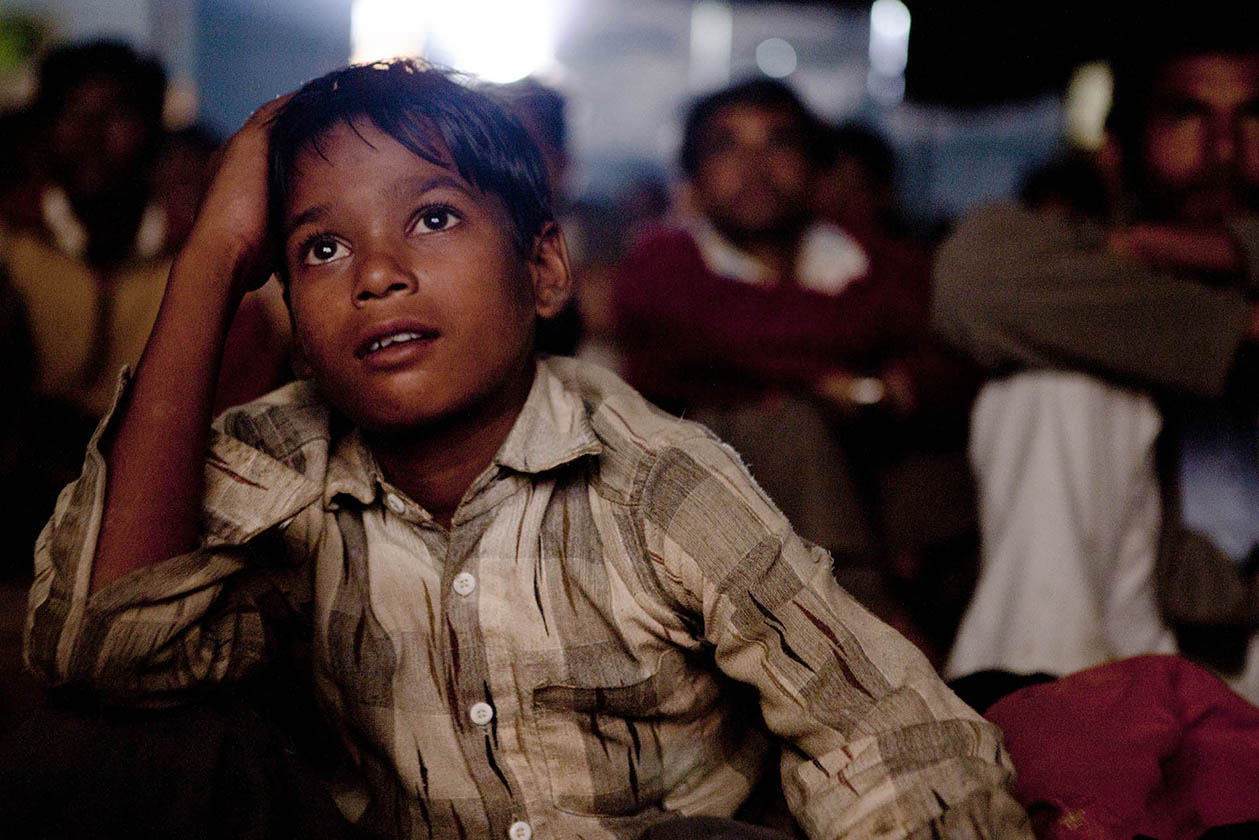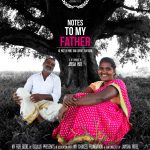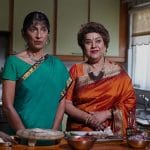Bollywood
Indie Films Step Up

Independent Indian films are winning laurels and audiences both in India and abroad.
- A SuitableGirl
- Caption
- Animated characters in a car.
- spicesisters
- The-Cinema-Travellers-TIFF-2016-Featured
After the theatrical release of Lipstick Under my Burkha, an award winning Indian film, was banned by the Central Board of Film Certification (CBFC), it was promptly picked by the Indian Film Festival of Los Angeles (IFFLA) to open the 2017 edition of the celebrated event. The festival proudly plans to present this sensitive story of four small town Indian women struggling with societal norms in its original edit.
In March, another Indian documentary, Notes to My Father, which holds the distinction of being the world’s first VR (virtual reality) documentary on sex trafficking, premiered at the SXSW (South by South West) Festival in Austin, Texas. The documentary garnered attention not just for its heart-rending subject, but also for the use of new-age VR technology that’s now beginning to stream into the world of movies too.
A RajKummar Rao starrer, Newton, which tells the tale of an election officer righteously doing his duty in a small town in India as Maoist conflicts loom large, went on win the Art Cinema Award at the Berlinale earlier this year and is now competing at the upcoming Tribeca Film Festival in New York in the international narrative competition section.
Alternate movies such as these have been gaining recognition at global forums lately, bringing the focus to an impressive body of independent films made both in India and by Indians across the globe. Despite increasing interest and funding, the indie film scene, however, continues to remain marginalized, swamped by the mammoth Bollywood industry. Nevertheless, indie Indian movies are creating a gentle stir in the creative world.
The alternative or indie film is a genre of feature films produced outside of a major studio and distributed by independent entertainment agencies. The subjects are often, non-commercial, honest, even uncomfortable portrayals of society, as opposed to the fluffy, feel-good representations popular in most mainstream movies.
It’s ironical though, that in a country in which an estimated 2,000 films in different languages are made annually, often it is festivals and screenings abroad that recognize the contributions of alternative Indian cinema. The popular culture, both at home and amongst diaspora Indians reveres commercial blockbusters.
Although Bollywood remains the big daddy of entertainment for Indians all over the world, with forecasts projecting an 11 per cent annual growth in 2017, there is also increasing interest among serious cinema lovers in the variety of ideas being tackled by parallel cinema in India.
A new report, titled, Digitization & Mobility: Next Frontier of Growth for M&E, released by Deloitte and The Associated Chambers of Commerce and Industry of India (ASSOCHAM), projects the size of Bollywood industry at $2.9 billion, (Rs 193 billion) in 2017. Theatrical revenues in India will also rise from $1.78 billion to $2.13 billion in 2017. As more mediums of storytelling, coupled with a growth in international platforms, become accessible to producers, the boats of independent filmmakers, telling tales from the Indian subcontinent, are rising too.
Los Angeles based filmmaker Sarita Khurana, whose feature film, A Suitable Girl, will be screened at the Tribeca Film Festival in New York this month, says: “India’s had a thriving alternative cinema for decades, in the 1950s to 1970s, and it’s wonderful to see a new wave of it again. Filmmakers like Aamir Khan and Anurag Kashyap have recently helped push this equation along, bringing films like Peepli Live to Sundance and Gangs of Wasseypur to Cannes. Because these films are being shown in international film festivals, there is a growing awareness of the fact that India is producing films that are not just Bollywood.”
Popularity in America?
This is especially true in America, where dedicated film festivals, such as the Indian Film Festival of Los Angeles (IFFLA) and New York Indian Film Festival, as well as several smaller ones, promote all facets of Indian cinema. These platforms give a chance to filmmakers from India and Indians across the world to tell unique and compelling stories often ignored by commercial cinema with depth and ingenuity.
Mike Dougherty, director of programming at IFFLA, says: “Indian cinema is such a trove of beautiful, diverse and daring filmmaking, both in the feature-length format and in short films. In a country of more than a billion people with 22 official languages, you’re sure to find a rich variety of work from a broad spectrum of artists. However, the film festival circuit worldwide and in the U.S. has often underrepresented Indian cinema, and does not give the cineaste community a true picture of the scope of work available from India.
“Many festivals play one, maybe two Indian films across their entire lineups and feel they’ve represented the country well. We know there’s much more out there, and we strive to elevate our films to their rightful place alongside the best of world cinema. IFFLA is crucial to giving these films a strong platform in the U.S., and we provide opportunities for the filmmakers to visit Los Angeles and introduce themselves to the biggest entertainment industry in the world.”
The filmmakers say that parallel films challenge the common notion that Indian films equate to Bollywood. Khurana says: “Because we’re producing non-Bollywood films, the festivals around the world have opened their eyes, and cinema from India is getting a lot more exposure. The stories are specific to a location or time period in India, but like all good cinema, relatable in a universal way. Once we break the Bollywood frame, these stories are just as relatable as any cinema coming from around the world.”
But aside from festivals or film connoisseurs is there an appetite for non-Bollywood films amongst diaspora Indians, or are they just mementos to diversity in Indian filmmaking? Smriti Mundhra, daughter of legendary Indian filmmaker JagMohan Mundhra, who has produced films such as Bomb the System in New York City and co-directed A Suitable Girl, says: “The surge in popularity of non-Bollywood Indian films in the U.S. is extremely encouraging. In Los Angeles, where I live, we have a number of theaters dedicated to Bollywood and diaspora films, and week after week I see crowds of South Asians from across all communities come out to see the latest releases — whether it’s Salman Khan’s new film or an independent drama like Shonali Bose’s Margarita With a Straw. The South Asian community seems to be very enthusiastic about this diversity in films and more than willing to support Indian independent cinema. This is great news for us, because they are a potential audience for our film that is already well established, show up to the theater every week (often in large groups) and are actually enthusiastic about art house films.”
Why international festivals matter?
The parallel movie movement began in India in the 1950s, helmed by legends, such as Satyajit Ray and later Shyam Benegal, and produced such classics as Pather Panchali (1955) directed by Satyajit Ray, which went on to win the Best Human Document award at the Cannes Film Festival.
Though a constant stream of parallel movies continued to win laurels throughout the 1970s and 1980s, with actors such as Smita Patil, Naseeruddin Shah and Om Puri effortlessly flitting between art house and mainstream cinema, Bollywood remained the toast of all times with its far reaching impact and totally eclipsed the art house genre by the 1980s and 1990s. One reason the alternative movies could not gain a following was the paucity of mediums at home to share the potential and a lack of funding to take the projects to international arenas.
The last decade has been more receptive, opening up new avenues to showcase alternate forms of storytelling. There are now dozens of film festivals both abroad and in India, ranging from the one held in Dharamshala to the Ladakh International Film Festival in the Himalayan region of Leh, a small town that does not even have a cinema of its own, to the Mumbai Queer Film Festival.
Perhaps the most significant is the International Film Festival of India (IFFI) organized by the Ministry of Broadcasting, Government of India, held in Goa annually, which provides opportunities for filmmakers to showcase their talents. Together with the Film Bazaar, organized by the National Film Development Corporation (NFDC) they are the principal vehicles to encourage collaboration between international and South Asian film producers.
However, it is still the laurels won at international festivals that turn the spotlight on Indian talent. Indian art films frequently earn more laurels in international circuits than amongst their own audiences, Christina Marouda, founder, IFFLA says: “To a certain extent yes, though this has been changing over the last couple of years, primarily because of the spotlight that the Mumbai International Film Festival has been putting on those films, as well as the incredible work that NFDC (National Film Development of India) has been doing in presenting the annual Film Bazaar.”
Hannah Norling, head of marketing and communications, My Choices Foundation, an NGO, engaged in uplifting women, which partnered in the VR documentary, My Father’s Daughter, says: “The festivals are an enormous opportunity for any film as the these are attended by global film industry leaders, from production houses to distributors. They provide a platform for exposure to those in the industry who can potentially get behind the film and take it forward.”
Their screening at the SXSW Festival, Norling said, allowed an unusual audience to be exposed to their work: “We see this as an opportunity not just to raise awareness for the issue of sex trafficking in India, but to also influence more story tellers to start sharing stories like these.”
The international festivals lead to confluence of ideas that bring together varied stories strung together by common emotions. They also take a lead in bringing stories facing difficulties getting screenings or finding an audience in India. For instance, this isn’t the first year that IFFLA is screening a film banned in India.
Marouda recalls: “Going back to 2005, it is the festival’s third year and everyone in our programming department is in love with this film called Black Friday. We confirm it and the producers tell us, one of us will come to present the film, we’re like, what about the director? You don’t want him there, he is a trouble maker. We say, hmm, strange, we’ll take your word, but we want to make sure you inform him of his film’s participating in IFFLA. Cut to an hour prior to the screening of the film. We receive a call, the Black Friday director is at the airport, a volunteer driver recognized him and picked him up, bringing him to ArcLight. I’m thinking, do we need to hire security, how about the Q&A, how am I going to handle that? The director arrives, humble, excited yet very nervous, it’s his banned film playing in front of a packed house in Los Angeles, in this exact theater. We have a fantastic Q&A, the film wins the jury award for best feature, the jurors along with us, call up all distributors and ask them to see this film, and keep an eye on this filmmaker from India. The rest is history…. Anurag (Kashyap) went on to become the most sought-after filmmaker from India in all top tier film festivals in the world.”
Smriti Mundhra adds: “Independent film is as competitive as it’s ever been, thanks to the access people have to the tools to make movies. That’s why festivals and film programs, like labs and grants, have become an important factor to give a film credibility so it stands out from the crowd.”
Mundhra who is showcasing A Suitable Girl at Tribeca this year, says: “Tribeca Film Festival is one of the most renowned festivals in the world. Being an official selection in the elite Documentary Competition program, is vital to the future of our film. It sends a message to the gatekeepers of the industry that this film is one worth paying attention to. We were also lucky to have the endorsement of other major organizations like Women In Film, Film Independent and the NFDC/Goa Film Bazaar. But Tribeca is just the beginning for us. We really look forward to screening our film at festivals worldwide to reach not just the industry but also our potential audience.”
Stories that matter
Contrary to common perception, international film festivals often pick tales that have typical Indian nuances. Norling says: “Storytelling seems to be becoming more important to viewers. Also Indian filmmakers and viewers are interested in ensuring that it isn’t the West that is the only one sharing India’s stories in documentary and independent film style.”
Foreign audiences are open to ideas that originate from the subcontinent and may sound extraordinary to the West, such as the story of A Suitable Girl, which revolves around the concept of arranged marriages, Khurana says: “A lot of people in the West have a misconception about arranged marriage in India — they have an old-school and narrow view that it is just about child marriage, or forced marriage, or don’t understand how arranged marriage is an institution like any other that evolves over time, so that there are many versions of ‘arranged marriage’ in contemporary India today. I think this film will open people’s eyes to what arranged marriage looks like in India today — and given that it’s not that different than what you might find on a western dating site. There are many relatable elements that may make people reconsider their outdated notions of arranged marriage. I also think people are thinking about how the outcomes of a love marriage is no more guaranteed than an arranged marriage, and seeing a different path to achieve the same thing (i.e. companionship, marriage), opens up a new dialogue about how people couple together, how do you find the ‘right’ one, and how do you negotiate this difficult thing called marriage?”
She adds, “Above all, the story is about how women negotiate this institution and deal with the various power dynamics and patriarchal expectations of their role in society, and how marriage upholds that patriarchy in many ways. That should be very relatable to a lot of women.”















